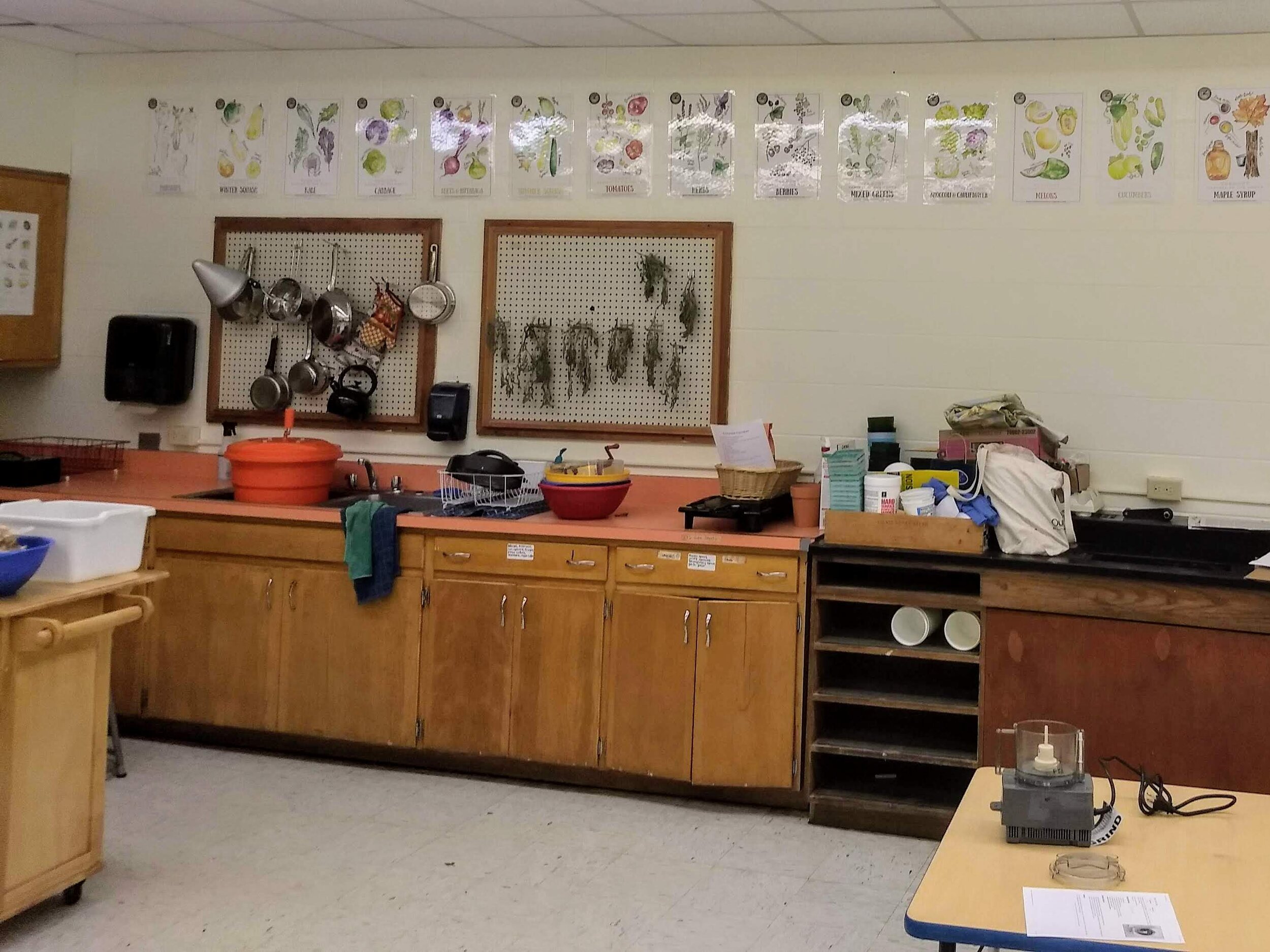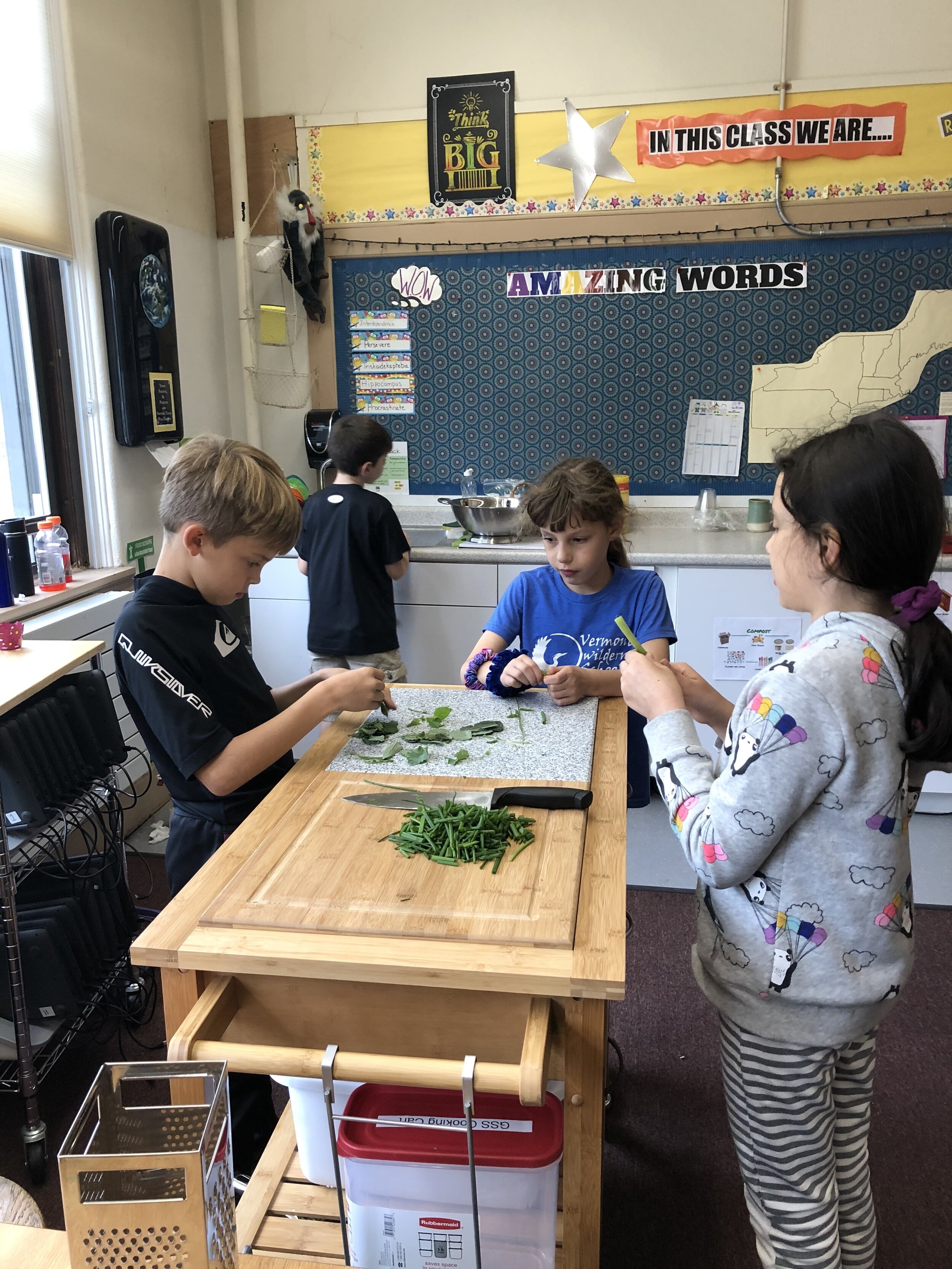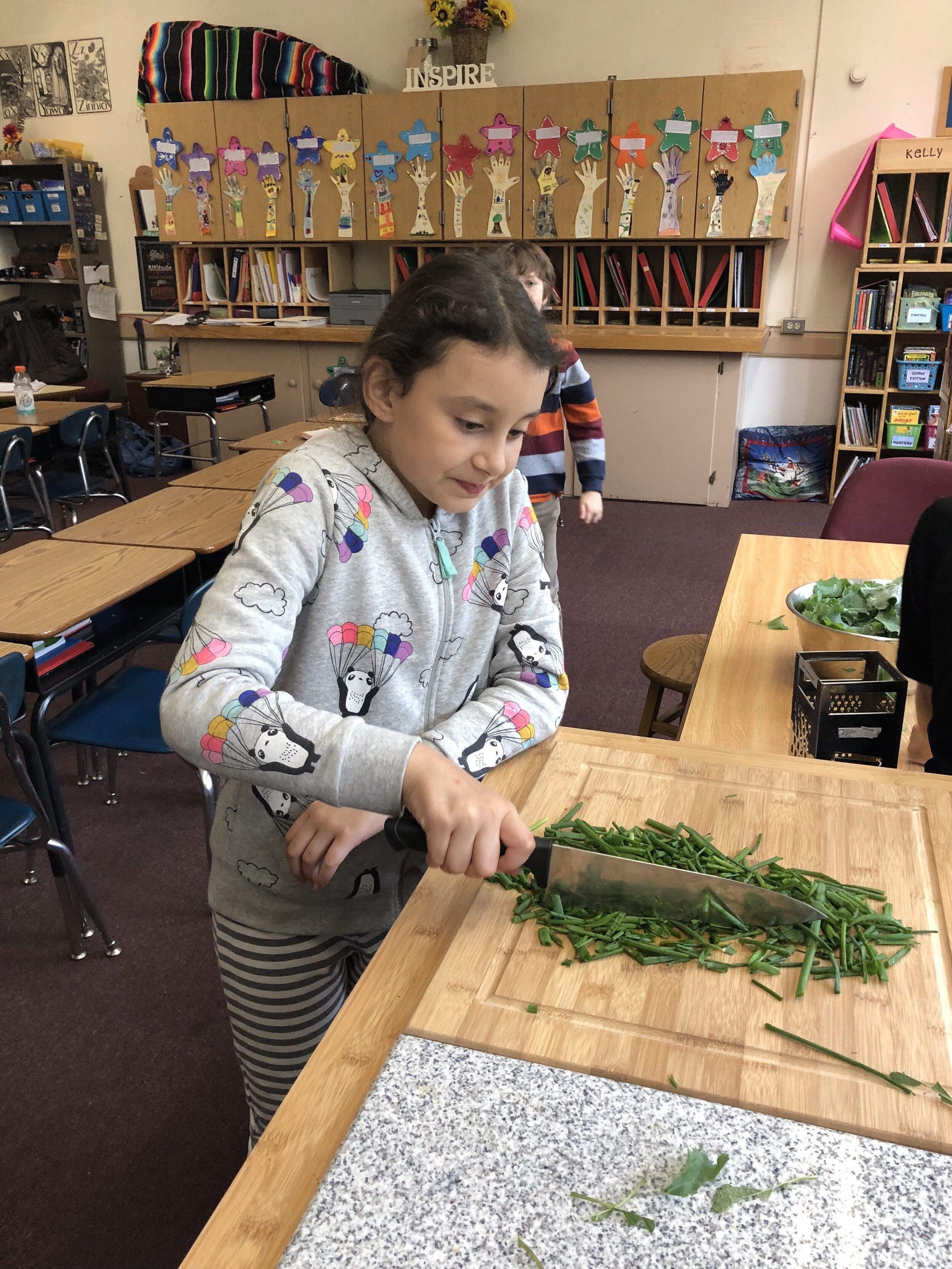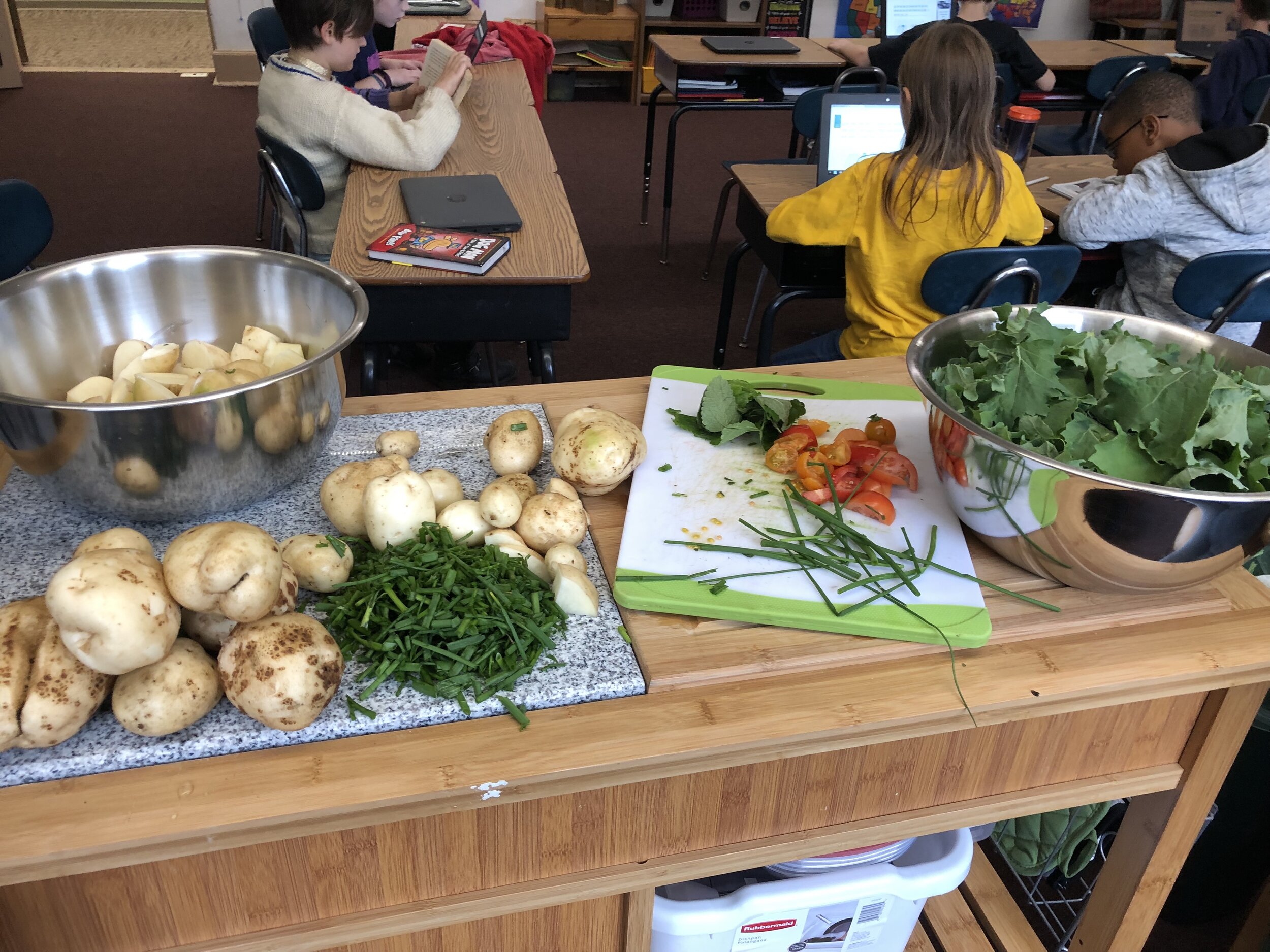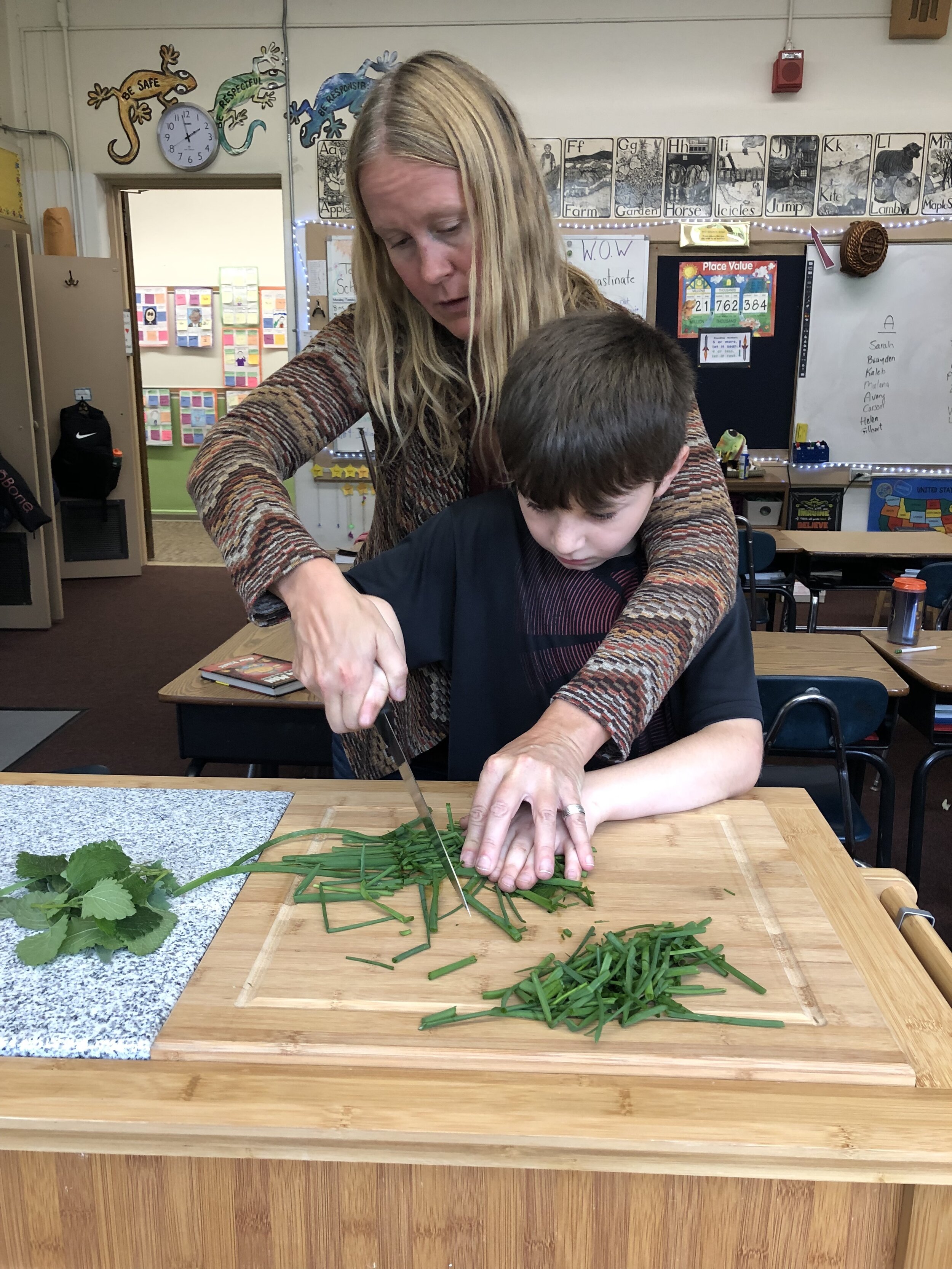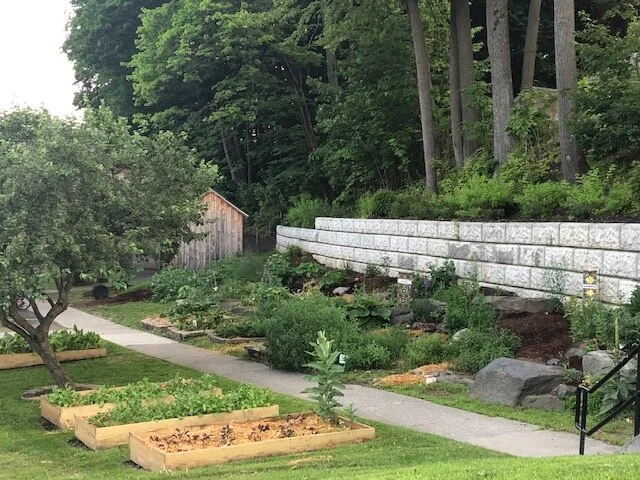Taste tests are an integral part of Farm to School programming and an easy way for newer schools to jump into FTS while making some “3 C’s” connections (classroom, cafeteria, and community). Guilford Central School has been at it for a while and their FTS Coordinator, Sarah Rosow, works with each grade to make dishes for the rest of the school to sample. Back in October—before there was 2 feet of snow on the ground—I joined Sarah and a group of fourth-graders to harvest some kale for their monthly taste test.
Sarah and two fourth graders cleaning a bed in preparation for winter.
I met the group in front of the school in their vegetable garden. As it was nearing the end of the season, many of the beds were cleared out. But there was still plenty of kale and this was one of the last harvests of the season. Students collected bunches of curly and dinosaur kale that all went into the salad spinner. Back in the classroom, some students washed the kale while others prepped the other ingredients that would go into the pesto recipe. Guilford is lucky to have a Farm to School classroom (a repurposed science classroom) that gives students more space to work and store their projects, making the preparation of the taste tests a bit easier. But, all that is really needed is a clear working surface and some kitchen utensils for students.
The Farm to School classroom at Guilford Central School.
The finished product before mixing with pasta for the taste tests.
During the taste test preparations, students were not only learning about growing vegetables but also building culinary skills as they read the recipe and washed and chopped the ingredients. The last step was to combine everything in a food processor and taste the end product themselves before bringing samples to each of the school’s classrooms.
Ideally—once all the students get a chance to taste the pesto—the next step is to coordinate with the school kitchen to get the new item on the menu. That way, students will already be familiar with the dish and there will be excitement stemming from the student involvement.
Interested in starting taste tests in your school? Check out these resources to get started:
Food Connects HOM page- links to both VT and NH HOM materials
HOM Calendars (contact Conor for a copy)
By Conor Floyd



